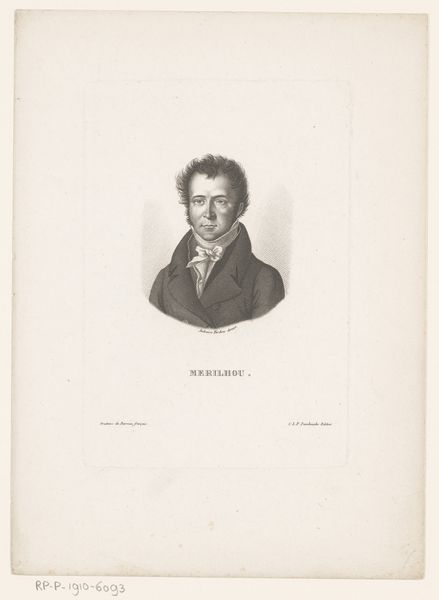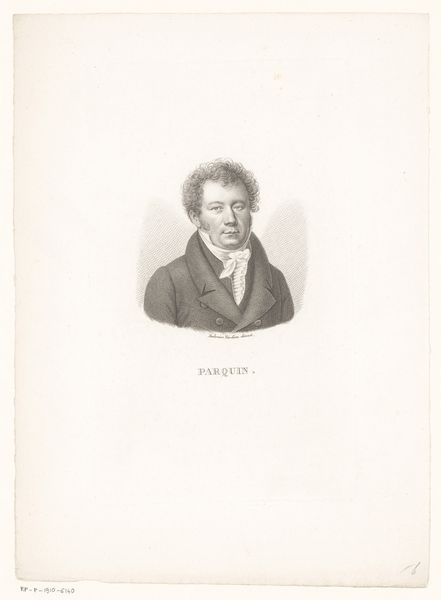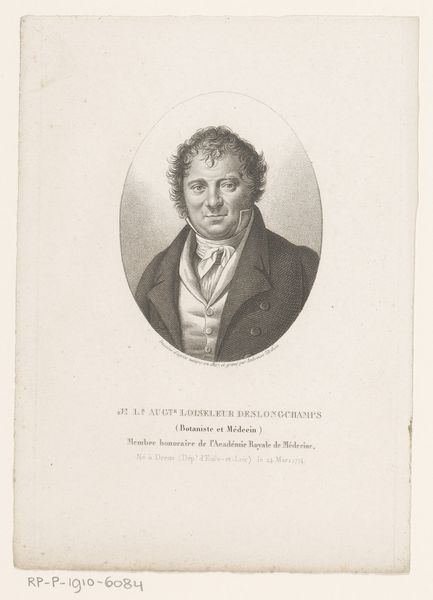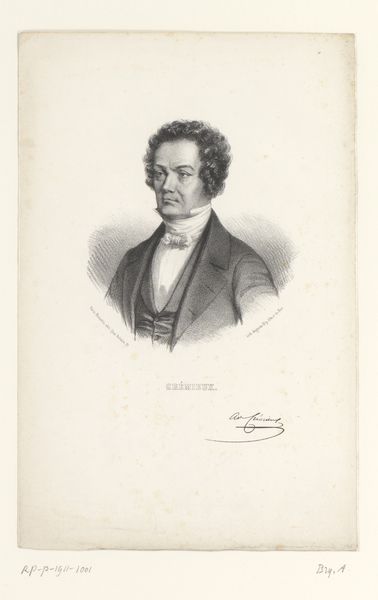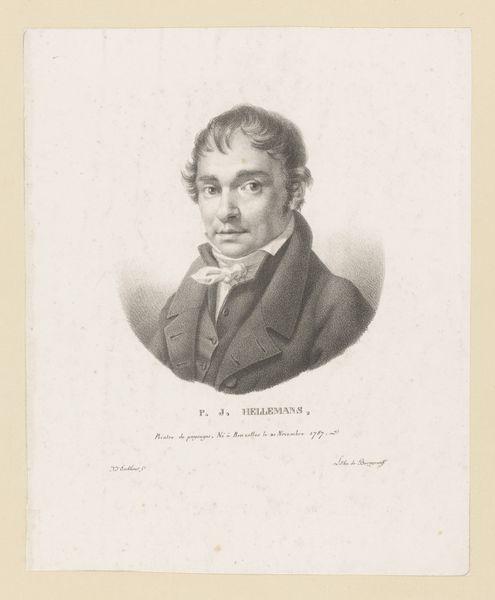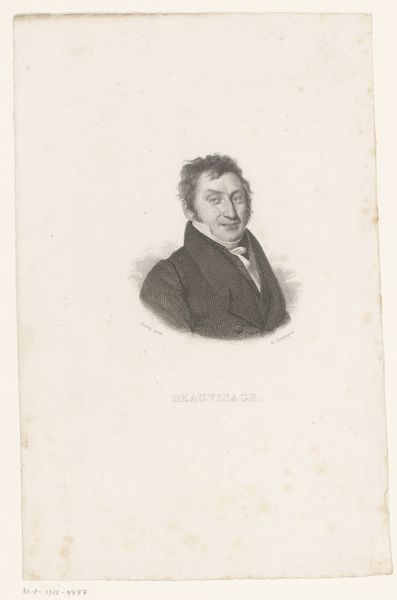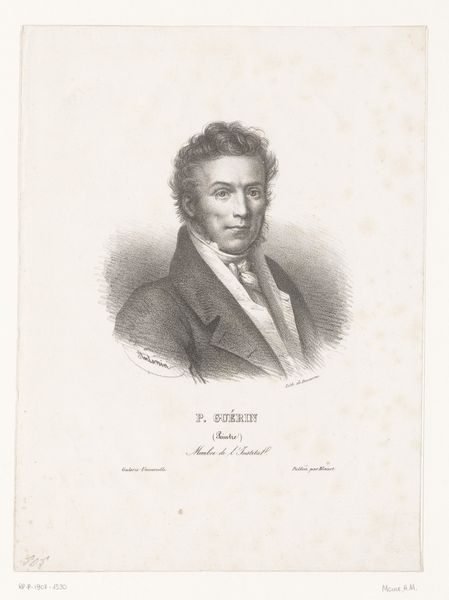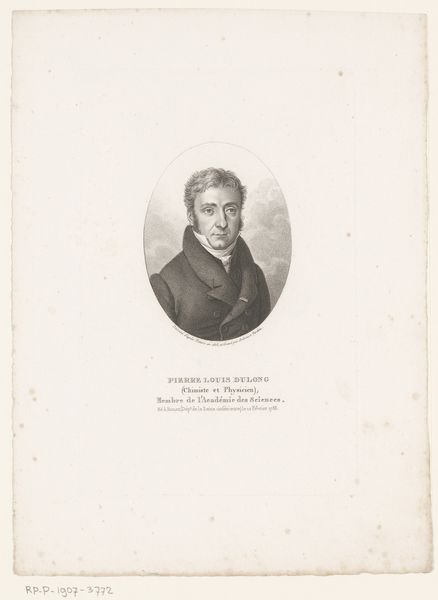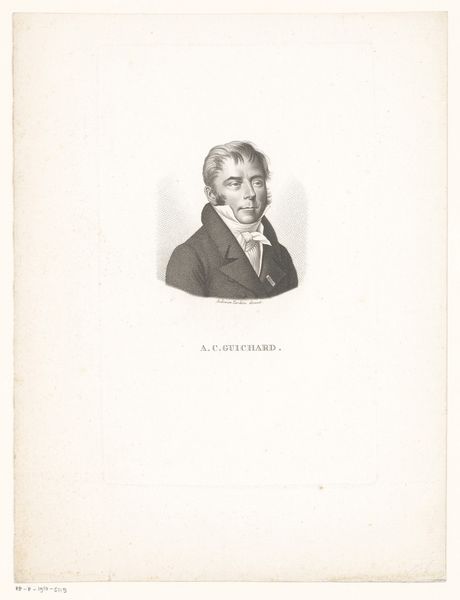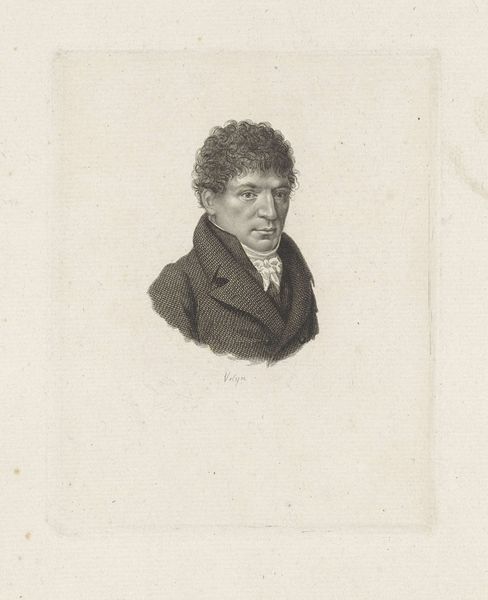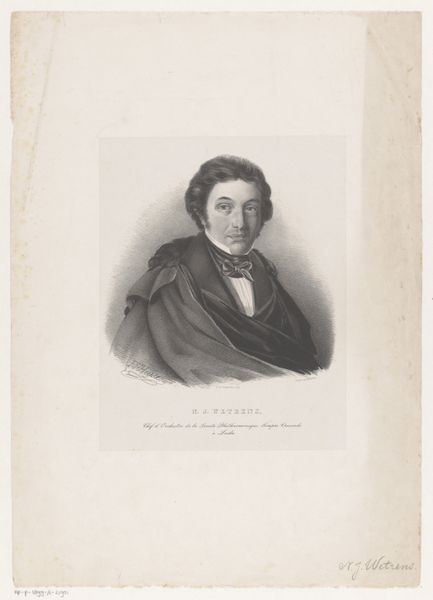
print, engraving
#
portrait
#
neoclacissism
# print
#
history-painting
#
academic-art
#
engraving
Dimensions: height 229 mm, width 143 mm
Copyright: Rijks Museum: Open Domain
Editor: Here we have Ambroise Tardieu's "Portret van Charles-Guillaume Étienne," created between 1820 and 1821, an engraving. The oval frame emphasizes the subject’s face, making me think about idealised forms. What do you see in the way the portrait is structured? Curator: From a Formalist perspective, the composition invites careful consideration. The tonal gradations, achieved through the engraving technique, create a compelling chiaroscuro effect, particularly on Étienne's face. The tightly controlled lines give the portrait a remarkable sense of texture, notably in the depiction of his hair and clothing. Consider the geometric aspect of the oval, juxtaposed with the curves of the hair – do these visual elements contribute to the overall balance, would you say? Editor: I see what you mean. The curve of the frame almost softens the academic formality, containing and focusing your eye. Do the clean lines point to the subject as someone serious, dignified perhaps? Curator: Perhaps. But how do you interpret the almost uniform texture across the entire image? It lacks distinct focal points outside the face, creating a kind of flatness despite the shadowing. It encourages us to analyse the relationship between the two-dimensional surface and the illusion of depth created by the engraving. It seems that by removing almost everything from the work, the artist is inviting us to focus our reading on the individual themselves, and not anything symbolic of the broader cultural landscape. Editor: I see it now. The limitations, then, become the points of interest, pushing us to look more closely at what remains, drawing connections between form and subject in a distilled way. Thank you! Curator: Precisely. Formal analysis refines how we extract information when considering portraiture.
Comments
No comments
Be the first to comment and join the conversation on the ultimate creative platform.
